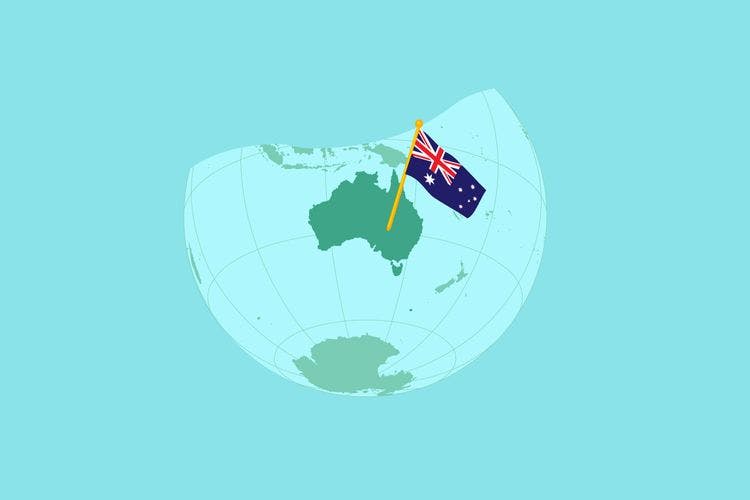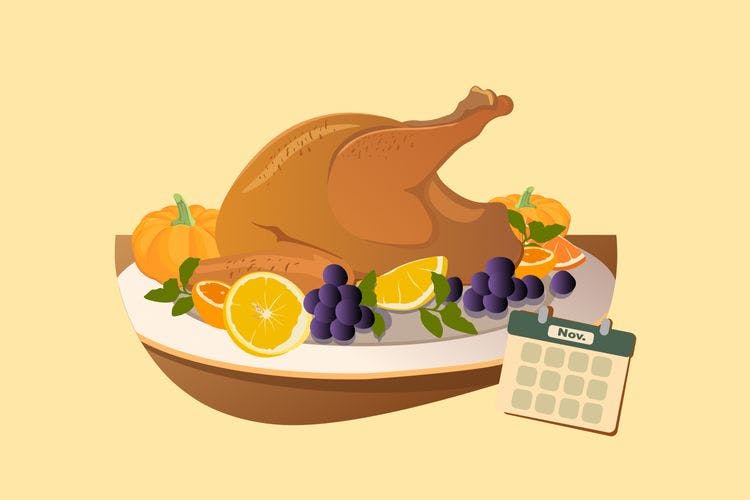Differences Between Canadians and Americans: An Exploration of North American Diversity


You will get a promo code with a discount for our app courses after reading this article.
Contents
From the expansive wheat fields of the Canadian prairies to the bustling cities of the United States, North America is a study in contrasts. Despite sharing a common border and a history intertwined in many ways, subtle differences between the two neighbors make each nation unique.
This article will explore key differences between the US and Canada – from language, geography, and politics to social norms, cuisine, and more. Keep reading to uncover the intricate diversity of two North American countries.
A Kaleidoscope of Customs: Cultural Diversity in the US and Canada
Culture is the essence of a nation, an intricate web weaved from its past, customs, and accepted behaviors. The United States and Canada possess vividly diverse cultural landscapes that mirror their distinct identities, even though they share geographical proximity.
A “melting pot” of diverse ethnicities in the US shapes its culture. This vast country is marked by regional cultural differences stemming from various factors such as history, immigration patterns, and climate. Canada is often described as a “mosaic” – a society where cultural differences are preserved and celebrated rather than blended. This deeply ingrained ethos creates a culture that values multiculturalism and politeness. Here are a few distinctive differences between Americans and Canadians related to their customs and practices:
- Sorry, eh? Canadians are famous for their polite demeanor, often saying “sorry” even when they’re not at fault. The interjection “eh” is a unique feature of Canadian conversation. On the other hand, Americans are known for their confidence and directness. It is reflected in everything from business practices to social interactions.
- Sports. Sports like American Football, Basketball, and Baseball reign supreme in the US. In Canada, ice hockey holds a special place in the national psyche, and lacrosse is the official summer sport.
- Holidays. Both nations celebrate Thanksgiving, albeit in different months and for different historical reasons. Also, while July 4th is a major celebration in the US, Canada Day falls on July 1st.
These are just a few examples of the diverse cultural customs and traditions that shape US and Canadian societies. Learning about these differences can help us appreciate the nuances of North American diversity and foster better cross-cultural understanding between our two neighboring nations.
Linguistic Differences Between the US and Canada
From the Atlantic to the Pacific, English is spoken with remarkable diversity. While American and British English are often compared due to their significant differences, the Canadian variant also occupies a unique position. Below, we outline some linguistic differences you may encounter when crossing north or south across the border.
Accent and Pronunciation
The aural landscapes of Canadian and American English vary in intriguing ways, revealing interesting accent and pronunciation differences. For example, one characteristic feature of Canadian English is a phenomenon called “Canadian Raising.” It’s most recognizable in how the “ou” in words like “about” or “house” is pronounced. It might sound more like “aboot” or “hoose” to American listeners.
In contrast, the United States is a melting pot of diverse accents with significant regional variations. From the ‘r’-filled sounds of the Southern drawl to the distinctive fast-paced twang of New York City, each region adds unique hues to the American English palette.
Vocabulary
The intriguing differences between American and Canadian English extend to vocabulary. Canadian English might seem like a blend of American and British English, which is partially correct. However, it also boasts unique elements that set it apart. Here are some notable examples:
- Americans go on ‘vacation,’ and Canadians take a ‘holiday.’
- Canadians wear a ‘toque’ in the winter, while Americans wear a ‘beanie.’
- In Canada, you might live in a ‘flat,’ whereas in the US, it’s called an ‘apartment.’
- ‘Petrol station’ in Canada becomes a ‘gas station’ in the US.
- ‘Candy floss’ in Canada is known as ‘cotton candy’ in the US.
Understanding these linguistic quirks will not only aid English learners in achieving more authentic communication. It will also provide insights into the unique cultural identities of these countries.
Grammar and Usage
Grammar represents another area where American and Canadian English differ. Both follow similar grammatical structures, but there are some occasional variations.
One of the most notable differences is the use of collective nouns. In American English, collective nouns are typically treated as singular entities. For example, Americans would say, “The team is winning.” However, following British grammar conventions in Canadian English, it’s acceptable to use a plural verb, as in, “The team are winning.”
Furthermore, Canadians often use the formal “shall” in questions suggesting future action, as in “Shall we go?” Americans typically favor “should” or “will” in the same context, asking, “Should we go?” or “Will we go?”
8
Politics Unpacked: The Governance of the US and Canada
Delving into the political terrain of North America, we discover contrasts between the US and Canada, particularly when we compare American and Canadian views on the size of government. These differences underscore the distinct political philosophies and provide valuable insights into the societal values within each nation.
The United States follows a federal system of government under a presidential republic. Here, the President, elected independently of the legislature, is the head of state and government. Power is shared among three branches: executive, legislative, and judicial, each with its responsibilities and checks and balances.
Contrastingly, Canada operates under a parliamentary democracy within a constitutional monarchy. In this system, the reigning monarch is the symbolic head of state, while real political power lies with the Prime Minister. As the head of government, the Prime Minister is typically the majority party’s leader in the House of Commons, blurring the separation of powers seen in the American system.
The USA vs Canada: Media and Entertainment Industries
The USA and Canada have strong media and entertainment industries influencing global culture. The US is known for big movies from Hollywood, while Canadian musicians are famous worldwide. These two countries contribute to cultural diversity in their unique ways.
The United States boasts the world’s largest and most influential entertainment industry. Hollywood, as the epicenter of American film, produces cinematic works recognized globally for their innovation and allure. Additionally, the US music industry, with global icons spanning genres from hip-hop to country, has unparalleled reach and influence.
In television, American productions have dominated screens worldwide, with powerhouse networks like HBO, Netflix, and NBC producing globally successful series. Furthermore, the US is a world leader in digital media and technology, with Silicon Valley companies like Facebook, Google, and Apple shaping the future of digital entertainment.
Canada’s entertainment industry, while smaller, has made significant contributions. Canadian cinema, often characterized by thought-provoking themes and unique storytelling, garners international respect. The music industry has gifted the world with stars like Justin Bieber, Drake, and Celine Dion, who have left a substantial mark on the global stage.
In television, Canada produces successful series with an international following, such as “Schitt’s Creek” and “Degrassi.” Moreover, the country’s media and entertainment landscape is also defined by a commitment to promoting and preserving Canadian culture.
Exploring Culinary Canada vs USA Differences
Just as music and art reveal a nation’s soul, so does its cuisine. And the culinary canvases of Canada and the United States are as varied as their landscapes. Let’s serve up a few distinctive dishes and traditions that tantalize the taste buds in these two North American nations.
- Iconic dishes. While the US is renowned for its burgers, hot dogs, and deep-dish pizza, Canada takes pride in poutine, a dish consisting of fries topped with cheese curds and smothered in gravy. Similarly, butter tarts and Tourtière, a hearty meat pie, are Canadian classics.
- Regional specialties. In the US, regional foods like Creole dishes in Louisiana, clam chowder in New England, and barbecue varieties across the South reflect the nation’s cultural diversity. In Canada, the east coast boasts delicious seafood, such as lobsters and mussels, while the west coast is known for its Pacific salmon.
- Sweet Treats. The US has famous desserts like apple pie, chocolate chip cookies, and New York-style cheesecake. Conversely, Canada offers sweet indulgences like Nanaimo bars, BeaverTails (fried dough pastry), and Maple syrup products.
- Drinks. America’s iconic beverages include Coca-Cola, bourbon, and craft beers. In contrast, Canada is known for its ice wines, craft beers, and Caesar – a cocktail similar to the Bloody Mary but with a twist of clam juice.
- Dining Habits. Canadians typically favor a relaxed, European-style dining experience, often enjoying a leisurely meal with family or friends. Meanwhile, Americans tend to value convenience and speed, as evident in the popularity of fast food and takeout options.
- Thanksgiving Traditions. The US and Canada celebrate Thanksgiving with different dishes. Turkey, stuffing, and cranberry sauce are common in both countries. However, Americans often serve sweet potatoes, while Canadians might include roast ham or tourtière dishes.
By understanding these Canada and US differences, we can appreciate the delightful diversity on North America’s dining tables. The mix of cultural influences, regional specialties, and local innovation makes the US and Canadian cuisine a feast for all senses.
Promova – Your Language-Learning Companion
Embark on a journey of language learning and cultural exploration with Promova. Our platform provides comprehensive courses tailored to your needs – whether starting from scratch or looking to fine-tune your language skills for an exam or real-life practical usage.
With Promova, you can access many tools and resources designed for maximum engagement and retention. Our app offers vocabulary lists and interactive quizzes for English, Japanese, Spanish, German and 7 more languages.
Our Conversation Club provides excellent opportunities to practice your English speaking skills with fellow language learners and enthusiasts. Plus, one-on-one personalized English speaking classes with certified tutors ensure you receive tailored attention and dynamic learning experiences.
So whether you’re interested in learning languages – Promova has it all! Join our community and enjoy a world-class learning experience that suits your busy schedule.
Conclusion
The US and Canada are neighboring nations with a common history but distinctive cultures shaped by various factors. These differences between Canadians and Americans, from customs and traditions to language nuances, political terrain, entertainment landscapes, and culinary contrasts, make each country unique. Knowing these subtle variations provides valuable insights into North American diversity and can foster better cross-cultural understanding.
Use your discount and learn languages with Promova
Start learningFAQ
Are there any distinct differences between the social norms of Canadians and Americans?
Yes, Americans and Canadians have different social norms. For example, Americans are known for their confidence in business practices and directness in social interactions, like hugging or waving to greet others. Canadians tend towards a more reserved approach where they only shake hands, usually avoiding physical contact unless with close friends or family members.
How has globalization affected the cultural landscapes of these two countries?
Globalization has influenced and diversified Canada’s and the US’s cultural landscapes, particularly through increased migration. However, due to Canadian culture’s mosaic nature, distinct cultures are less likely to blend in this country than in the melting pot ethos found south of its border.
How has British influence impacted modern-day Canadian English?
The British influence has significantly influenced modern-day Canadian English, particularly in spelling and grammar. Canadians tend to retain more British spelling rules. Canadian English often follows British conventions in grammar, such as using plural verbs with collective nouns.
Where can I learn more about the linguistic differences between the US and Canada?
You can study the linguistic differences between these two countries through various digital resources. For instance, the Cambridge Dictionary provides exhaustive insights into the variances between American, British, and Canadian English regarding spelling, grammar, and vocabulary. Also, the Canadian Broadcasting Corporation offers a wealth of articles and podcasts detailing various aspects of Canadian English, including its distinctive features.



Comments